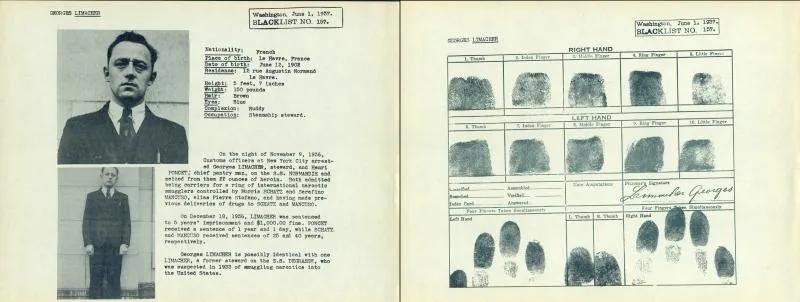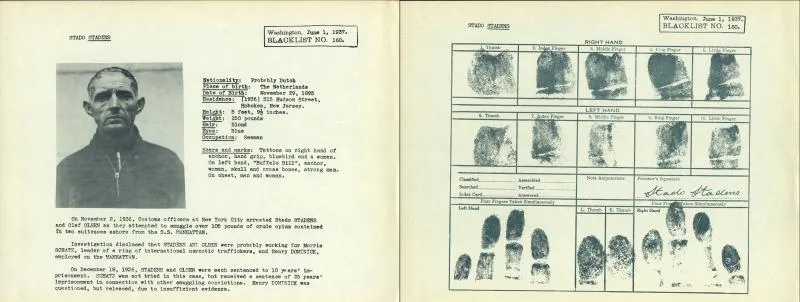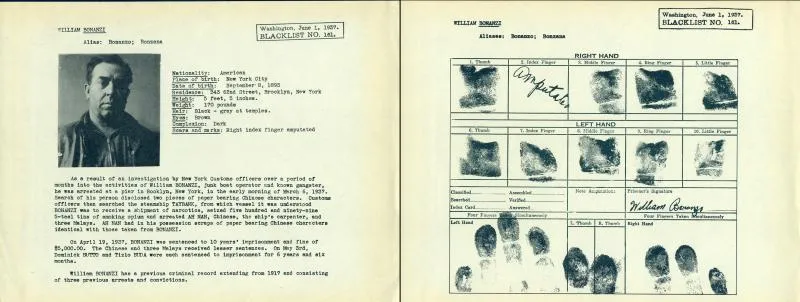Featured Artifact
Today, law enforcement officers can check electronic databases for arrest records and biometric evidence like fingerprints, which appear on screen in seconds to confirm the identity of a suspect. But in the days before computers, officers and agents relied on paper records and their own memories and powers of deduction to match a criminal with his or her identifying information.
One such print source was the “Black List of Persons Engaged in the Illicit Traffic in Narcotic Drugs.” These Black Lists (renamed National or International Lists in later years) contained photographs, inked fingerprints, and detailed descriptions of what traffickers looked like. Information on their crimes and any known associates were also recorded. In some cases, the circumstances of how they were caught were added.
The records pictured here document three drug traffickers captured by New York Customs officers in the 1930’s. Customs officers kept their Black Lists up-to-date, often writing in new information by hand. The CBP History Collections hold several of these Lists dating through the 1950’s.



BLACK LIST OF PERSONS ENGAGED IN THE ILLICIT TRAFFIC IN NARCOTIC DRUGS
Object ID# 2012.6.2
Date 1936-1937
Bound documents with additional loose pages.

